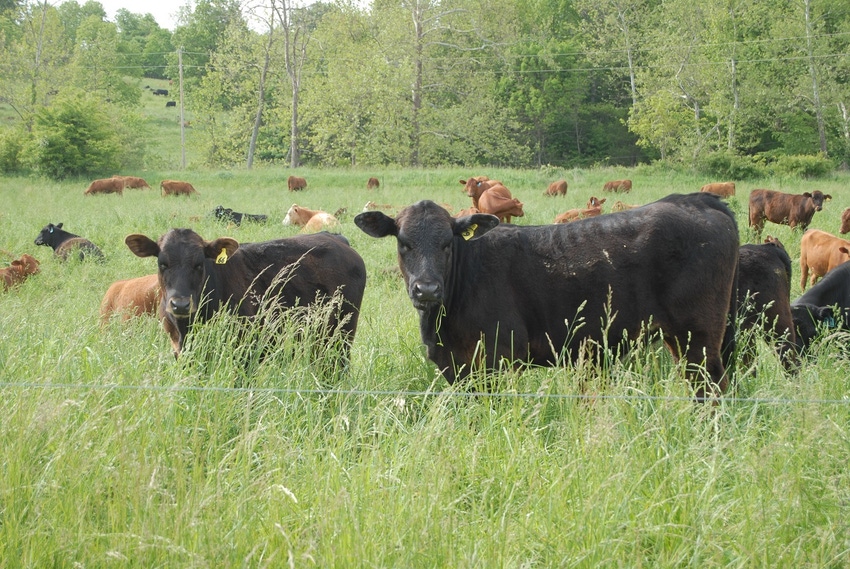
One of the discussion groups that I follow has had an ongoing dialogue on animal health problems I think worthy of further dissection.
The topics have ranged from the irritating to the deadly, from pinkeye to death by frothy bloat. The management used by the discussion group members to combat these maladies varied widely, but the most successful centered on improving immune system function with better nutrition and stress reduction.
If improved nutrition comes about through increased soil health, the benefits are magnified many times. With good management and planning, the use of medications can be limited mostly to intervening in acute situations. Here's an example I have used before: Kids don't get sick because the cold virus suddenly shows up. The virus is always with us. People get sick because their immune systems break down, allowing the virus population to explode.
There can be any number of reasons that immune systems fail but problems can usually be traced back to some sort of stress: Nutritional, physical, mental or combinations of these three.
Many years ago when I was still following the recommendations of the land grant colleges – highly reactive nitrogen fertilizer, weed sprays and poisons for everything from fire ants to horn flies to evil spirits – we had trouble with eye disease, foot rot, retained placentas, calf scours and poor breed-back. I used the recommended practices – vitamin A, trace elements, antibiotics in the mineral mix and a full slate of vaccinations – without much success.
We spent a lot of time and money before realizing the root cause of our problems. The high rates of chemical fertilizer, along with tillage and lots of pesticide use destroyed the life in our soils. The mycorrizial fungi, the beneficial bacteria, the earthworms were gone. This loss meant the forages my animals were consuming had both deficiencies of nutrients (particularly trace elements) and high levels of toxicants, such as nitrates, pesticide chemicals, and imbalanced mineral profiles. The practices we used to promote animal performance in reality had the opposite effect.
We have allowed our abilities to outrun our wisdom. We have a multitude of powerful tools with which to treat "problems," but we have trouble identifying the problem. We still look for simple ways to deal with complex situations. If pasture is covered up with weeds, it seems logical (and feels good) to kill the weeds. However satisfying, it does nothing to change the conditions that favor the pests – poor water cycle, weak mineral cycles, poor energy flow.
In reality, there are great similarities between weedy pastures, horn-fly infested cattle, and scouring calves. All three become serious only when conditions degrade to the point that the pest organisms are favored over the plants and animals we are trying to promote. The logical approach to these, and most other maladies, is to determine what conditions are causing the problems and change the conditions.
The number one cause of weedy pastures is bare ground. Cover the ground with plant material, living and dead, and the water cycle is immediately improved, which favors the higher-successional forage plants. Having the ground covered slows and reduces the germination of weed seed and greatly reduces weed competition.
Horn flies and most other pest populations are best controlled by promoting biodiversity both on and in the soil. In Australia, horn fly numbers dropped 70% when dung beetles were introduced. Chemicals used to combat insect pests of all kinds kill beneficial insects such as dung beetles and make the situation worse. The heritability of resistance to horn flies, internal parasites and other pests is high enough in most livestock that animals with resistance can be selected, thereby giving a permanent solution. "Kill the pest" management of animals, by whatever means, reduces the managers' ability to identify and increase the numbers of resistant animals.
Disease is caused by pathogens, but animals in good nutritional balance and free of severe stress are remarkable resistant to pathogen infection. Calves born in winter will be stressed physically, nutritionally and mentally, so they will be susceptible to whatever disease comes along. Calves born in the true spring, after their mothers have had 20-30 days of green forage, will be healthy and feel good and grow rapidly.
Sir Albert Howard, an English botanist and organic farming pioneer, wrote that the work oxen used on his experimental farm in nineteenth century India spent nights comingled with native cattle suffering high rates of hoof and mouth disease but never got sick because they were fed on forage grown in high-organic-content soil with robust soil biology.
Metabolic upsets such as frothy bloat, which is caused by excess protein in relation to energy in forage, and milk fever, which is caused by a shortage of available calcium, can be prevented by attention to the diet animals receive. The ability to present forage to animals at the stage of growth that best suits their needs is one of the more valuable benefits of good grazing management. There will be times when we need to intervene with whatever treatment is indicated but a great many problems can be solved by thoughtful management.
About the Author(s)
You May Also Like




